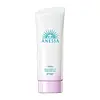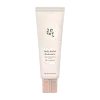What's inside
What's inside
 Key Ingredients
Key Ingredients

 Benefits
Benefits

 Concerns
Concerns

 Ingredients Side-by-side
Ingredients Side-by-side

Water
Skin ConditioningDimethicone
EmollientEthylhexyl Methoxycinnamate
UV AbsorberAlcohol
AntimicrobialZinc Oxide
Cosmetic ColorantTitanium Dioxide
Cosmetic ColorantGlycerin
HumectantDiisopropyl Sebacate
EmollientTranexamic Acid
AstringentDiphenylsiloxy Phenyl Trimethicone
Skin ConditioningDiethylamino Hydroxybenzoyl Hexyl Benzoate
UV FilterPEG-100 Hydrogenated Castor Oil
EmulsifyingPEG-60 Hydrogenated Castor Oil
EmulsifyingSilica
AbrasivePPG-17
Skin ConditioningHydrated Silica
AbrasiveIsostearic Acid
CleansingBis-Ethylhexyloxyphenol Methoxyphenyl Triazine
Skin ConditioningDimethylacrylamide/Sodium Acryloyldimethyltaurate Crosspolymer
CI 77891
Cosmetic ColorantAluminum Hydroxide
EmollientPhenoxyethanol
PreservativeEthylhexyl Triazone
UV AbsorberDextrin Palmitate
EmulsifyingHydrogen Dimethicone
Mica
Cosmetic ColorantSorbitan Sesquiisostearate
EmulsifyingBeheneth-20
EmulsifyingSuccinoglycan
Skin ConditioningCellulose Gum
Emulsion StabilisingParfum
MaskingBHT
AntioxidantTocopherol
AntioxidantCitric Acid
BufferingSodium Metaphosphate
BufferingTrisodium EDTA
Dipotassium Glycyrrhizate
HumectantHydroxypropyl Methylcellulose Stearoxy Ether
Sodium Citrate
BufferingButylene Glycol
HumectantTalc
AbrasiveSodium Metabisulfite
AntioxidantPEG/PPG-14/7 Dimethyl Ether
Skin ConditioningCI 17200
Cosmetic ColorantCamellia Sinensis Leaf Extract
AntimicrobialPotentilla Erecta Root Extract
Skin ConditioningCI 42090
Cosmetic ColorantSodium Acetylated Hyaluronate
HumectantPolyquaternium-51
Skin ConditioningSoluble Collagen
HumectantWater, Dimethicone, Ethylhexyl Methoxycinnamate, Alcohol, Zinc Oxide, Titanium Dioxide, Glycerin, Diisopropyl Sebacate, Tranexamic Acid, Diphenylsiloxy Phenyl Trimethicone, Diethylamino Hydroxybenzoyl Hexyl Benzoate, PEG-100 Hydrogenated Castor Oil, PEG-60 Hydrogenated Castor Oil, Silica, PPG-17, Hydrated Silica, Isostearic Acid, Bis-Ethylhexyloxyphenol Methoxyphenyl Triazine, Dimethylacrylamide/Sodium Acryloyldimethyltaurate Crosspolymer, CI 77891, Aluminum Hydroxide, Phenoxyethanol, Ethylhexyl Triazone, Dextrin Palmitate, Hydrogen Dimethicone, Mica, Sorbitan Sesquiisostearate, Beheneth-20, Succinoglycan, Cellulose Gum, Parfum, BHT, Tocopherol, Citric Acid, Sodium Metaphosphate, Trisodium EDTA, Dipotassium Glycyrrhizate, Hydroxypropyl Methylcellulose Stearoxy Ether, Sodium Citrate, Butylene Glycol, Talc, Sodium Metabisulfite, PEG/PPG-14/7 Dimethyl Ether, CI 17200, Camellia Sinensis Leaf Extract, Potentilla Erecta Root Extract, CI 42090, Sodium Acetylated Hyaluronate, Polyquaternium-51, Soluble Collagen
Water
Skin ConditioningHomosalate
Skin ConditioningButyloctyl Salicylate
Skin ConditioningOctocrylene
UV AbsorberEthylhexyl Salicylate
UV AbsorberDipropylene Glycol
HumectantDiethylhexyl 2,6-Naphthalate
EmollientPolymethylsilsesquioxane
Butyl Methoxydibenzoylmethane
UV AbsorberGlycerin
HumectantCaprylyl Methicone
Skin Conditioning1,2-Hexanediol
Skin ConditioningSilica
AbrasiveVp/Eicosene Copolymer
Pentylene Glycol
Skin ConditioningBehenyl Alcohol
EmollientPoly C10-30 Alkyl Acrylate
Emulsion StabilisingPolyglyceryl-3 Methylglucose Distearate
EmulsifyingCetearyl Alcohol
EmollientGlyceryl Stearate
EmollientInulin Lauryl Carbamate
Emulsion StabilisingTromethamine
BufferingCarbomer
Emulsion StabilisingAcrylates/C10-30 Alkyl Acrylate Crosspolymer
Emulsion StabilisingSodium Stearoyl Glutamate
CleansingEthylhexylglycerin
Skin ConditioningPolyacrylate Crosspolymer-6
Emulsion StabilisingOryza Sativa Extract
AbsorbentT-Butyl Alcohol
PerfumingTocopherol
AntioxidantWater, Homosalate, Butyloctyl Salicylate, Octocrylene, Ethylhexyl Salicylate, Dipropylene Glycol, Diethylhexyl 2,6-Naphthalate, Polymethylsilsesquioxane, Butyl Methoxydibenzoylmethane, Glycerin, Caprylyl Methicone, 1,2-Hexanediol, Silica, Vp/Eicosene Copolymer, Pentylene Glycol, Behenyl Alcohol, Poly C10-30 Alkyl Acrylate, Polyglyceryl-3 Methylglucose Distearate, Cetearyl Alcohol, Glyceryl Stearate, Inulin Lauryl Carbamate, Tromethamine, Carbomer, Acrylates/C10-30 Alkyl Acrylate Crosspolymer, Sodium Stearoyl Glutamate, Ethylhexylglycerin, Polyacrylate Crosspolymer-6, Oryza Sativa Extract, T-Butyl Alcohol, Tocopherol
 Reviews
Reviews

Ingredients Explained
These ingredients are found in both products.
Ingredients higher up in an ingredient list are typically present in a larger amount.
Glycerin is already naturally found in your skin. It helps moisturize and protect your skin.
A study from 2016 found glycerin to be more effective as a humectant than AHAs and hyaluronic acid.
As a humectant, it helps the skin stay hydrated by pulling moisture to your skin. The low molecular weight of glycerin allows it to pull moisture into the deeper layers of your skin.
Hydrated skin improves your skin barrier; Your skin barrier helps protect against irritants and bacteria.
Glycerin has also been found to have antimicrobial and antiviral properties. Due to these properties, glycerin is often used in wound and burn treatments.
In cosmetics, glycerin is usually derived from plants such as soybean or palm. However, it can also be sourced from animals, such as tallow or animal fat.
This ingredient is organic, colorless, odorless, and non-toxic.
Glycerin is the name for this ingredient in American English. British English uses Glycerol/Glycerine.
Learn more about GlycerinSilica, also known as silicon dioxide, is a naturally occurring mineral. It is used as a fine, spherical, and porous powder in cosmetics.
Though it has exfoliant properties, the function of silica varies depending on the product.
The unique structure of silica enhances the spreadability and adds smoothness, making it a great texture enhancer.
It is also used as an active carrier, emulsifier, and mattifier due to its ability to absorb excess oil.
In some products, tiny microneedles called spicules are made from silica or hydrolyzed sponge. When you rub them in, they lightly polish away dead skin layers and enhance the penetration of active ingredients.
Learn more about SilicaTocopherol (also known as Vitamin E) is a common antioxidant used to help protect the skin from free-radicals and strengthen the skin barrier. It's also fat soluble - this means our skin is great at absorbing it.
Vitamin E also helps keep your natural skin lipids healthy. Your lipid skin barrier naturally consists of lipids, ceramides, and fatty acids. Vitamin E offers extra protection for your skin’s lipid barrier, keeping your skin healthy and nourished.
Another benefit is a bit of UV protection. Vitamin E helps reduce the damage caused by UVB rays. (It should not replace your sunscreen). Combining it with Vitamin C can decrease sunburned cells and hyperpigmentation after UV exposure.
You might have noticed Vitamin E + C often paired together. This is because it is great at stabilizing Vitamin C. Using the two together helps increase the effectiveness of both ingredients.
There are often claims that Vitamin E can reduce/prevent scarring, but these claims haven't been confirmed by scientific research.
Learn more about TocopherolWater. It's the most common cosmetic ingredient of all. You'll usually see it at the top of ingredient lists, meaning that it makes up the largest part of the product.
So why is it so popular? Water most often acts as a solvent - this means that it helps dissolve other ingredients into the formulation.
You'll also recognize water as that liquid we all need to stay alive. If you see this, drink a glass of water. Stay hydrated!
Learn more about Water